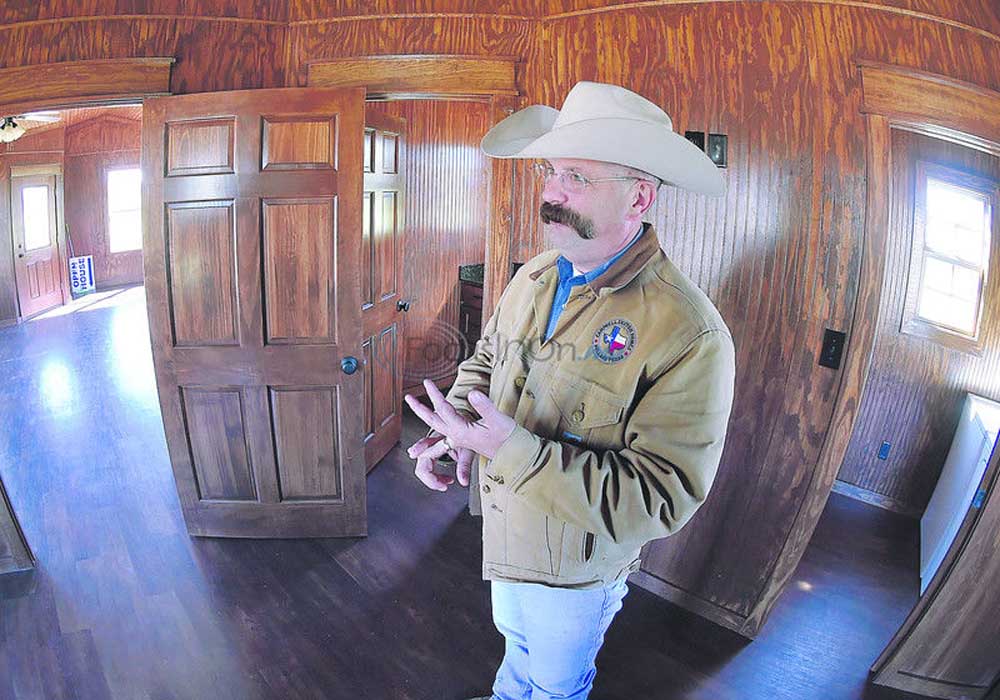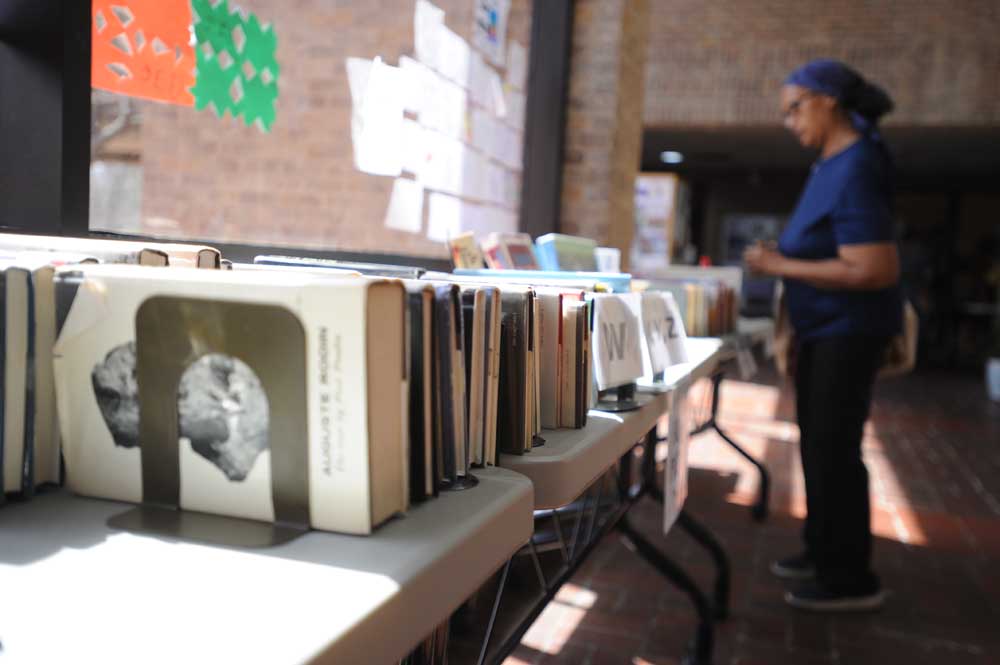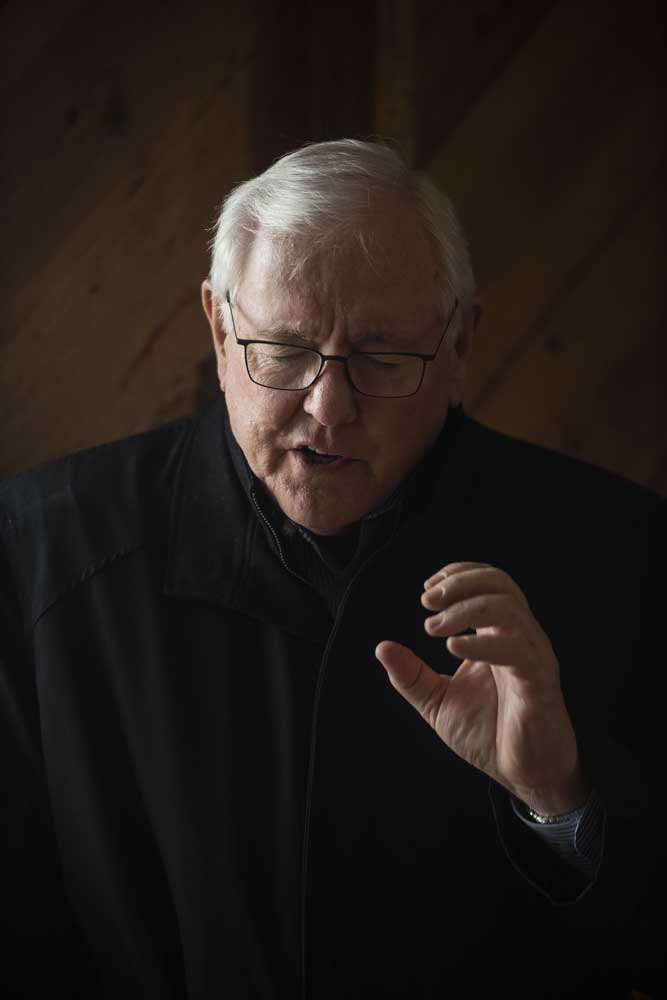Sellers market for tiny homes in Smith County
Published 9:54 pm Saturday, November 28, 2015

- Builder Jason Campbell talks about the specs of what he hopes will become the latest fashion in home ownership, a tiny home he's built and is selling from his Campbell Custom Homes business on Monday in Bullard. At just shy of 730 square feet, the homes come in at less than $60,000, but pack the amenities of much larger residences, including full bath, kitchen with granite counter tops and a utility room capable of housing a full-sized washer and dryer. Andrew D. Brosig/Tyler Morning Telegraph
Within 24 hours of the ad going up, homebuilder Jason Campbell had four calls about Campbell Custom Homes’ newest design. Campbell believes he might be onto something very, very big – mini homes.
“It’s a trend we’d noticed,” said Campbell, who has been a builder for more than 20 years in the Bullard area. “People have been asking for smaller and smaller houses. Some of them ask for mother-in-law quarters, some want something on a lake. Maybe for a college student or young marrieds. There are good reasons to go small.”
Tiny houses are a national trend, but the Smith County home sales figures show there might be a special niche here. It’s a seller’s market in Smith County and much of East Texas, and that puts particular pressure on first-time homebuyers and those looking to move up incrementally from starter homes.
“The lower-end buyers are being priced out of the market,” said Claudia Carroll, chairwoman of the Greater Tyler Association of Realtors. “It’s tough to find those starter homes – especially newer homes.”
The houses being built now are higher-end homes, she said.
Everyone is building for the buy-up market,” Ms. Carroll explained. “It’s too expensive to build the starter homes these days – I think the profit margins are too narrow.”
Another factor is many developments in the area are largely built out. There are few lots from which to choose. And there are few new developments in the works.
“The cost to develop land in Smith County for a subdivision is high, and it’s hard to get new home construction for the first-time home buyers,” Ms. Carroll said. “The days of (big developers such as) Choice Homes and Classic Century Homes – those days are gone.”
THE NUMBERS
Home sales in Smith County continued to be strong in October, with total sales of 202 homes closing, up 4.6 percent above September’s 193 homes sold but relatively even with the 200 unit closings in October 2014.
The average price dipped slightly, down about 2 percent from September’s $194,578 to $190,675 in October. Average prices were down 3.8 percent compared to $198,203 in October 2014.
The median price barely budged, as well. The October median home price was $160,650, up less than 1 percent from September’s $160,000 almost 1 percent higher than October’s $159, 237.
The median home price is the mid-point of home sales prices – in this case, the selling price of the 101st home sold in Smith County in October. It’s a useful gauge because it isn’t so skewed by unusually high or unusually low home prices.
But the really surprising number in the home sales stats this month is the average days-on-market, or how long a home, on average, is up for sale before finding a buyer.
The days-on-market dropped dramatically in October, from September’s 70 days to 57 days. That’s a decrease of almost 20 percent.
“That’s getting a ‘wow’ out of me,” Ms. Carroll said. “That’s indicating pent-up buyers and homes coming onto the market in good condition, already staged. Those sellers are being rewarded with quick sales and even sometimes a bidding war. I’m starting to hear about some of those happening here.”
The Smith County home inventory remains unchanged at 5.6 months. Home inventory is how long, based on the past year’s sales rate, it would take to clear out existing inventory with no more homes introduced into the market.
“Anything under six months, that’s a seller’s market,” Ms. Carroll explained. “Six months is balanced, it’s healthy. And in some price ranges we have that. But certainly, the lower price homes are being snapped up when they come on the market.”
What does that mean for first-time home buyers and younger families looking to move up – but not quite to the quarter-million dollar home yet?
“Honestly, they’re going to have to lower their expectations,” Ms. Carroll said. “There just aren’t the under-$175,000 new homes out there anymore.”
Instead, those looking for less expensive homes will have to look at existing homes, and be ready to invest money in a fixer-upper.
“You might not get the two baths you want, you might need to make do with the bath and a half,” she said. “The home might be functionally obsolete, but if you’re willing to invest in updating it, you’ll get your money out of it later.”
LIVING LARGE
This is one reason tiny houses and mini houses are hot right now, nationwide. They’re particularly popular in regions where the cost of living is high, homes are expensive and younger home buyers are looking for bargains.
The industry journal Realty Today featured an article about small homes earlier this month. It noted a couple of television shows have focused on tiny-house living. Small homes make sense, the magazine said.
“They are relatively affordable, and serve as best solution for millennial who don’t have enough capital to purchase a large house,” it explained. “Aside from the price, the flexibility of a tiny home is also to be considered, for because of its small size it can actually be taken almost anywhere as long as there is a good road to travel. As a bonus you also get to help mother earth heal her from the pollution around. And with the use of the recyclable material, you can have your own customized tiny home.”
Jason Campbell’s model mini house has a grand total of 729 square feet, and is priced at just $58,420. He’ll build on a slab on a customer’s land for an additional $4,274.
The exterior is metal, while the interior is elaborate wood paneling. It’s well-insulated, and Campbell estimates the monthly electric bill would be modest.
“Maybe $50, and that’s it,” he said.
That’s another appeal; bigger homes are more expensive to maintain, heat, cool – and pay taxes on.
“I think the big calling for these (small houses) has to do with people wanting to scale back on their expenses,” he said. “If you pay cash for this – if you’re not paying a note – then your monthly cost would be about $100, we think.”
The design capitalizes on the storage space that is available – there’s a pantry, and room for hanging clothes above the washer and dryer.
It’s not for everyone, Campbell acknowledges. But there is a demand for smaller homes these days.
“We can build you one of these in about six weeks,” he said. “For some people, this is their dream home.”
TWITTER: @tmt_roy






